 |
Brillouin opticaltime-domainreflectometryusingup-conversion single-photondetector
Abstract:
A direct-detection Brillouin optical time-domain reflectometry (BOTDR) using an up-conversion photon-counting detector and an all-fiber structure Fabry–Perot scanning interferometer is demonstrated with shot-noise limited performance. Taking advantage of ultra-low noise equivalent power of the up-conversion photon-counting detector and high spectral resolution of the interferometer, the Brillouin spectra along a polarization maintaining fiber (PMF) are analyzed in the optical frequency domain directly. In contrast with heterodyne BOTDR, photon-counting BOTDR has better EM compatibility and faster speed in data processing. In experiments, using peak input power of 20dBm, temperature profile along a 9km PMF is retrieved according to the Brillouin shifts, with spatial/temporal resolution of 2m/15s. The precision is 0.7°C at the leading end and 1.2°C at the trailing end.
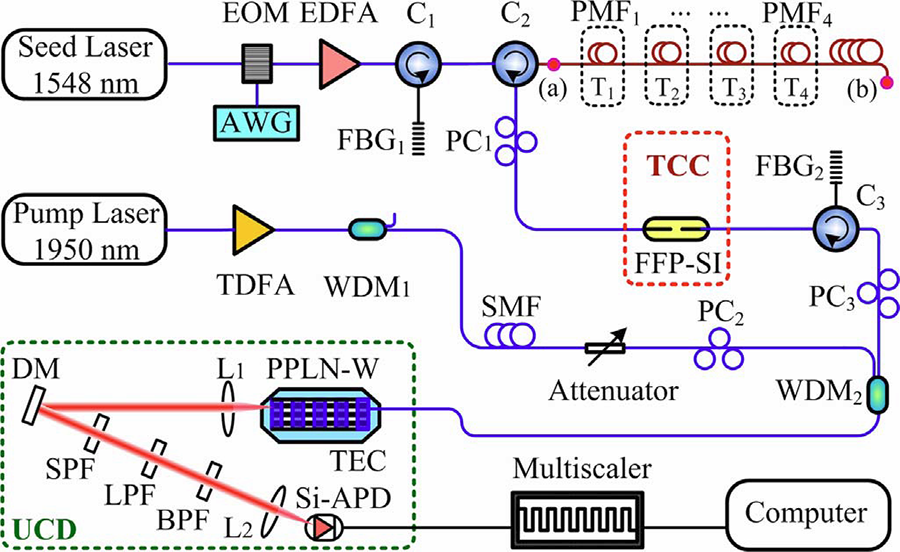
Fig. 1. System layout. EOM, electro-optic modulator; AWG, arbitrary waveform generator; EDFA, erbium doped fiber amplifier; C, circulator; PC, polarization controller; TCC, temperature controlled chamber; FFP-SI, fiber Fabry–Perot scanning interferometer; FBG, fiber Bragg grating; TDFA, thulium doped fiber amplifier; WDM, wavelength division multiplexer; SMF, single mode fiber; TEC, thermo-electric cooler; DM, dichroic mirror; SPF, short-pass filter; LPF, long-pass filter; and BPF, band-pass filter.
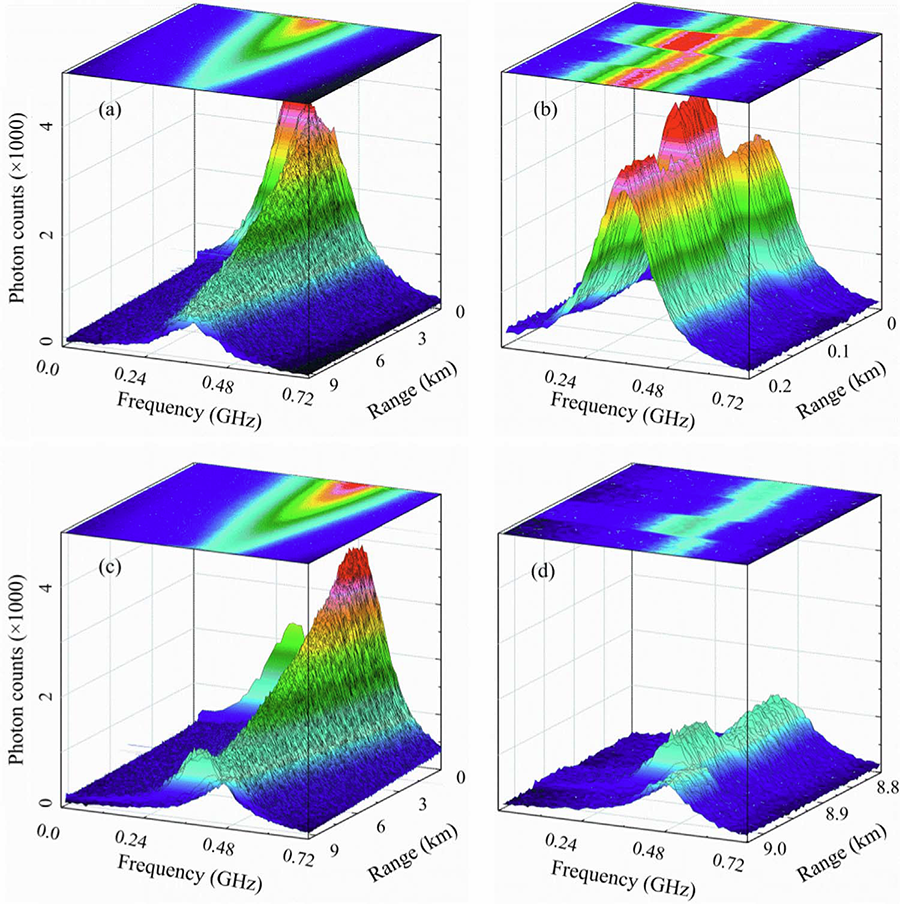
Fig. 2. (a) Brillouin spectra of unstrained PMF when the probe pulse lunched from the leading end. (b) Zoom-in image of (a) from 0 to 0.2 km. (c) Brillouin spectra when the probe pulse lunched from the trailing end. (d) Zoom-in image of (c) from 8.8 to 9 km.
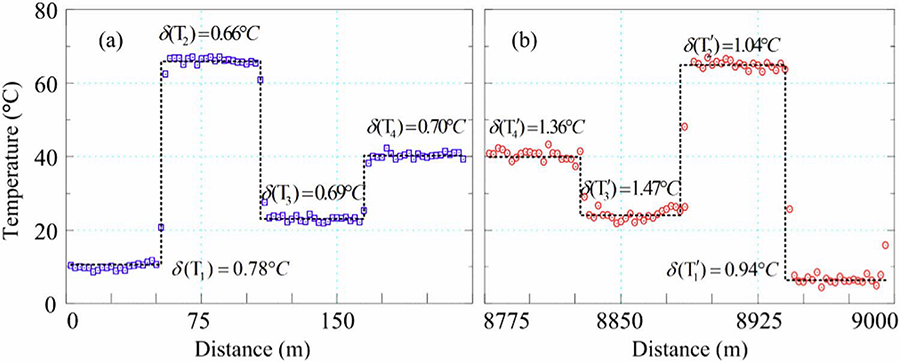
Fig. 3. Nonlinear fitting of the raw data to Lorentz functions at different ranges. Residuals are relative to the peaks.
Brillouin optical time domain reflectometry for fast detection of dynamic strain incorporating double-edge technique
Abstract:
For the first time, to the best of our knowledge, a direct detection Brillouin optical time-domain reflectometry (BOTDR) is demonstrated for fast distributed dynamic strain sensing incorporating double-edge technique, time-division multiplexing technique and upconversion technique. In order to guarantee the robust stability of the system, the double-edge technique is implemented by using a convert single-channel FPI and a fiber- coupled upconversion single-photon detector, incorporating a time-division multiplexing method. The upconversion single-photon detector is adopted to upconvert the backscattering photons from 1548.1 nm to 863 nm, which is subsequently detected by a Silicon avalanche photodiode (Si-APD). In the experiment, dynamic strain disturbance up to 1.9 mε over 1.5 km of a polarization maintaining fiber is detected at a sampling rate of 30 Hz. An accuracy of ± 30 με and spatial resolution of 0.6 m are realized.
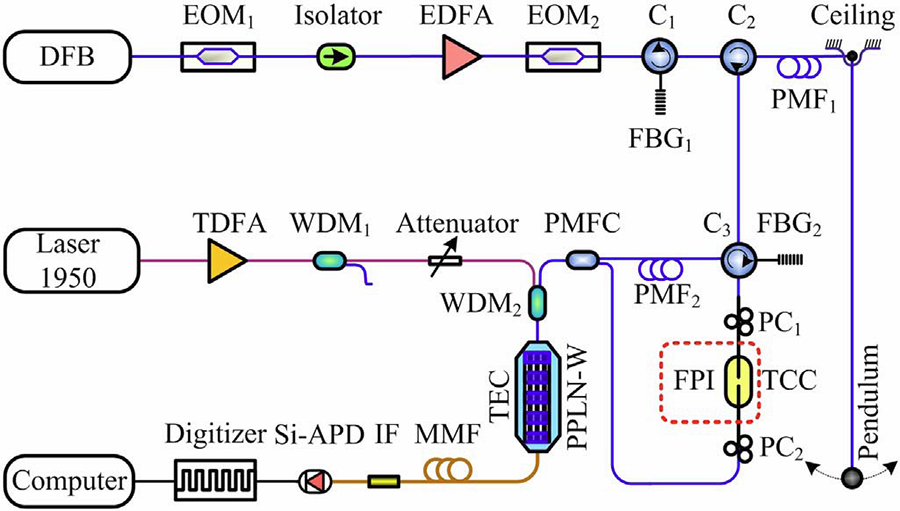
Fig. 1. Optical layout of the system. DFB, distributed feedback diode; EOM, electro-optic modulator; EDFA, erbium doped ?ber ampli?er; C, circulator; FBG, ?ber bragg grating; PMF, polarization-maintaining fiber; PC, polarization controller; FPI, Fabry-Perot interferometer; TCC, temperature controlled chamber; PMFC, polarization-main- taining ?ber coupler; TDFA, thulium doped fiber amplifier; WDM, wavelength division multiplexer; PPLN-W, periodically poled Lithium niobate waveguide; TEC, thermo-electric cooler; MMF, multimode fiber; IF, interferometer filter.
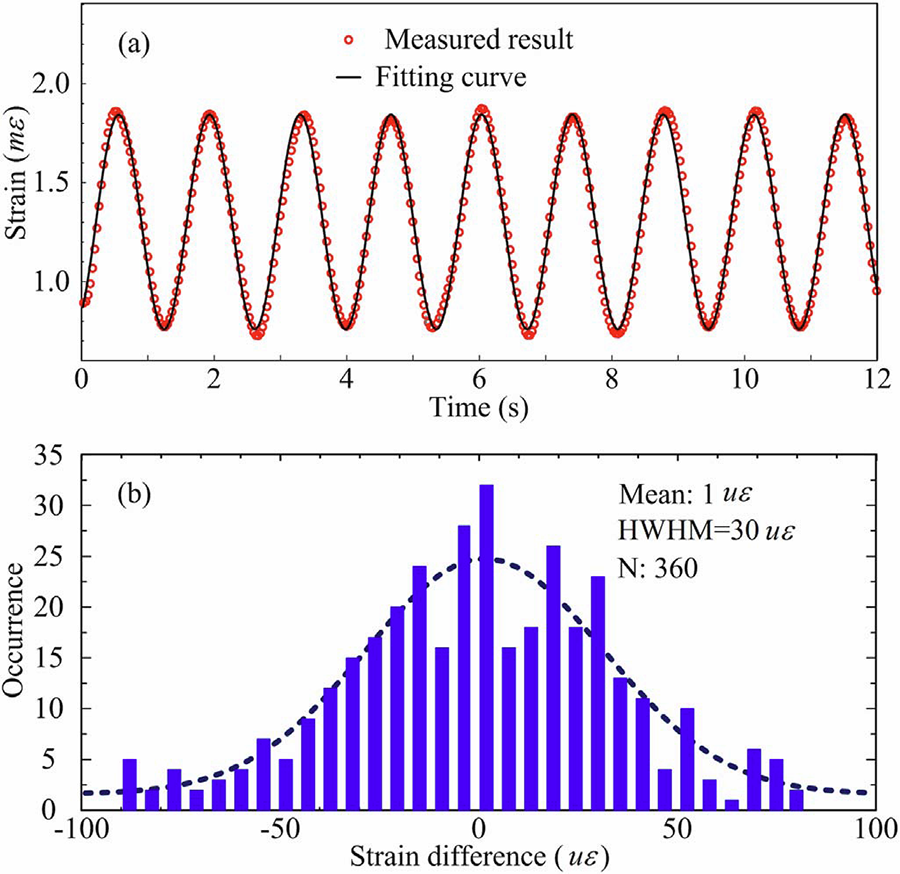
Fig. 2. (a) Retrieved strain results; (b) histogram distribution of the strain difference between the measured result and fitting result.
